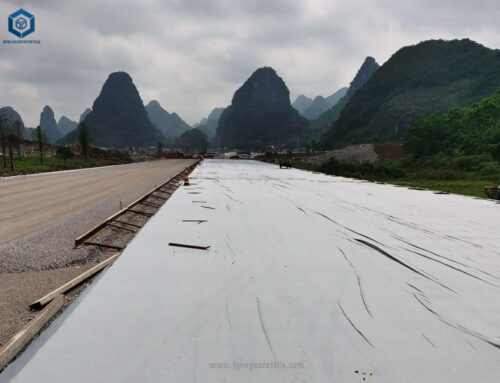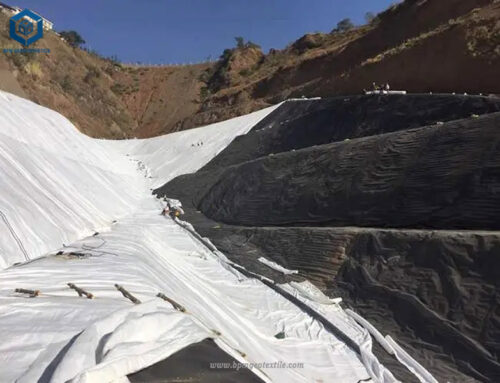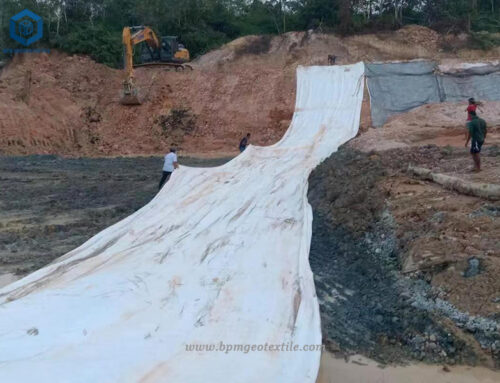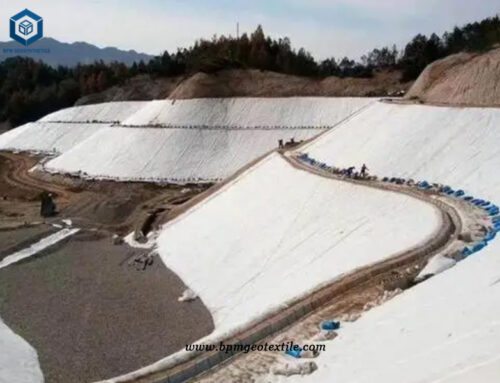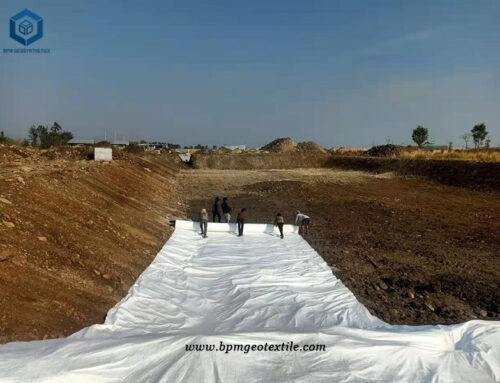PP geotextile fabric is often made from polypropylene or fibers processed by woven, needle-punched or heat-bonded methods. Short fiber needle punched geotextile fabric is made from 100% virgin staple polypropylene fibers that are tangled and interlocked with each other by needle-punching process. It is the kind of non woven geotextile fabric which is robust, durable, permeable and resist to deformation. BPM short fiber nonwoven geotextile fabric is widely used to increase ground support and soil stabilization in a given location, it has the characteristics of high tensile strength, high elongation rate, excellent UV stabilization, excellent filtration and good abrasion resistance, etc. It is widely used for filtration, separation, protection, drainage applications in civil environmental engineering and construction projects. PP geotextile fabric has the following Advantages.
- It has good air permeability and water permeability, allowing water to pass through, thereby effectively intercepting sand and soil loss.
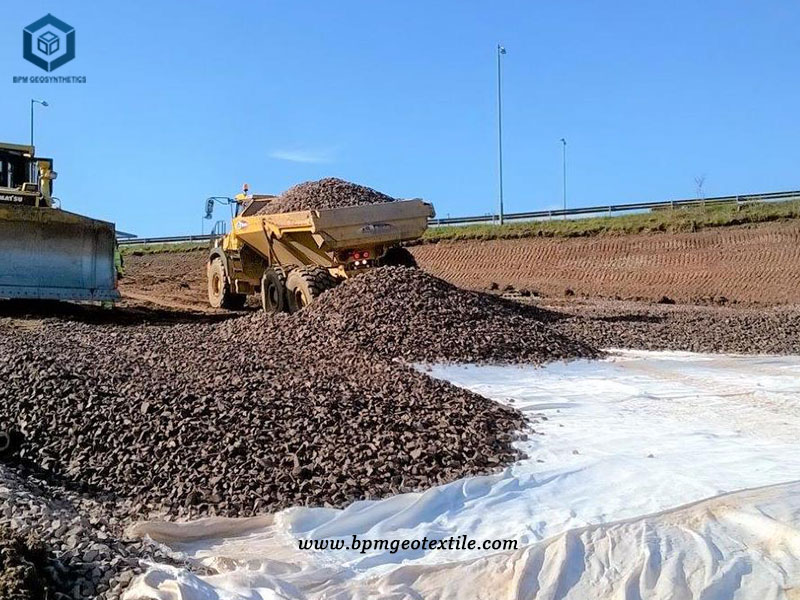
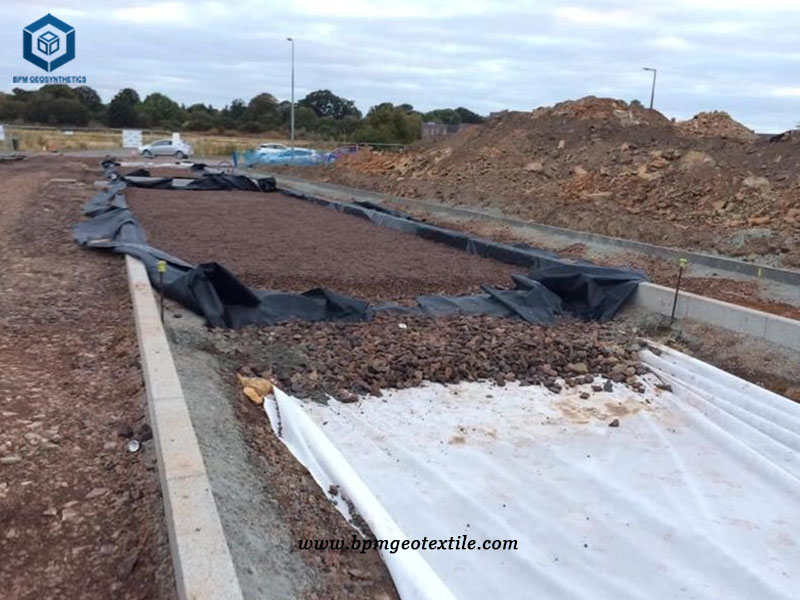
- Effectively diffuse, transfer or decompose concentrated stress to prevent soil from being damaged by external forces.
- Prevent mixing between the upper and lower layers of sand, gravel, soil and concrete.
- The mesh is not easy to be blocked, and the mesh structure formed by the unshaped fibrous tissue has strain and mobility.
- High water permeability, it can still maintain good water permeability under the pressure of soil and water.
- Corrosion resistance, using polypropylene or polyester and other chemical fibers as raw materials, acid and alkali resistance, no corrosion, no insects, and anti-oxidation.
- Simple construction, light weight and easy to use.
Polyester fiber is resistant to acids and weak alkalis. It is stable to various oxidants and reducing agents.
Polyester fiber is not resistant to strong alkalis. High leakage and high alkali will completely embrittle the fiber. Polypropylene fiber has good chemical stability, both acid and alkali resistance, and is also very stable to various oxidants.
Under normal circumstances, polyester is only more resistant to sunlight than polypropylene. Polypropylene has to be treated with ultraviolet rays to meet the requirements of long-term exposure. However, geotextiles are generally not exposed to the sun or air, and the material is not required to have too high resistance. Solar performance; more importantly, polypropylene fiber has strong acid and alkali resistance, and can guarantee 100% stable performance in various geological conditions and use environments. The acid resistance of polyester is fair, but the alkali resistance is very poor, and weak alkali can decompose it, so it is not suitable for use in any alkaline environment. The leachate in the landfill contains complex heavy metal decomposition products, including strong acids and alkalis. Nowadays, PP staple fiber non-woven fabrics are generally used in foreign landfill projects.
Geotextile construction method for domestic waste landfill
- Storage, transportation and treatment of geotextile
PP geotextile fabric rolls should be protected from damage before installation and laying. Geotextile rolls should be stacked in a place where no water will accumulate after treatment, and the stack height should not exceed the height of four rolls. During transportation on site, the geotextile rolls must be protected to avoid any damage (including transporting the rolls from the storage place on the site to the working surface).
2. the connection and stitching of geotextile
Use hot melt welding on almost horizontal surfaces (10% slope or less than 10%). On slopes greater than 10%, continuous stitching or hot melt welding of geotextiles. The bonding wire must use a polymer material with a tensile strength exceeding 60N. The chemical resistance and UV resistance of the bonding wire must be equal to or better than the geotextile.
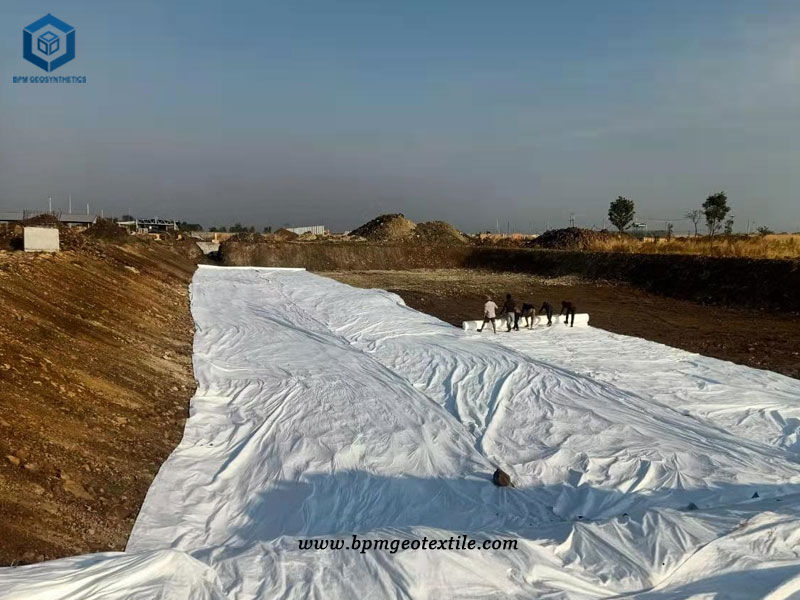
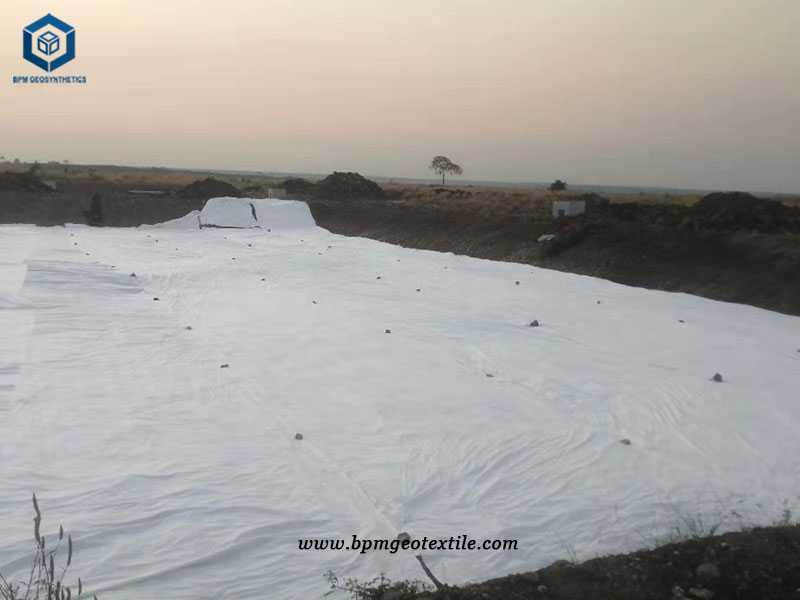
With the increasing number of domestic wastes, the Lao government vigorously develops landfill projects, and the government allocates funds to support these landfill projects to ensure the country’s environmental sanitation and people’s water safety issues.
In 2020, Lao customers found the details of their government bidding project that we gave us. They need geomembrane, geotextile and composite drainage net. We send them to customers for testing. Each sample is 2 square meters in size. Our products have been tested by professional IGS in Thailand. A customer from Laos placed an order for us.
Specifications of PP Geotextile Fabric for Landfill Project in Laos
- Geotextile – 300gsm,22000 square meters
- Geomembrane – 1.5mm, 22000 square meters
- Geocomposite 700gsm,22000 square meters
About BPM
BPM manufactures and wholesales many types of effective and states of the art geotextile, geomembrane, and other geosynthetics to over 36 countries. BPM geosynthetic products are widely used across a variety of industries including waste containment, water containment, aquaculture, industrial project, energy project and mining projects, etc. BPM main customers are from Australia, France, Sweden, UK, Hungary, New Zealand, Poland, Mexico, Ecuador, Brazil, Pakistan, Bangladesh, Thailand, Vietnam, Malaysia, Indonesia, Singapore, Philippines, Sri Lanka, India, UAE, Saudi Arabia, Qatar, Kenya, etc.
BPM is not only manufacturing best quality geosynthetic products but also providing professional design and installation service. OEM, ODM, custom development and fabrication are also available. If you have any questions or inquiries, please fill and submit the following form, we will reply as soon as possible.

